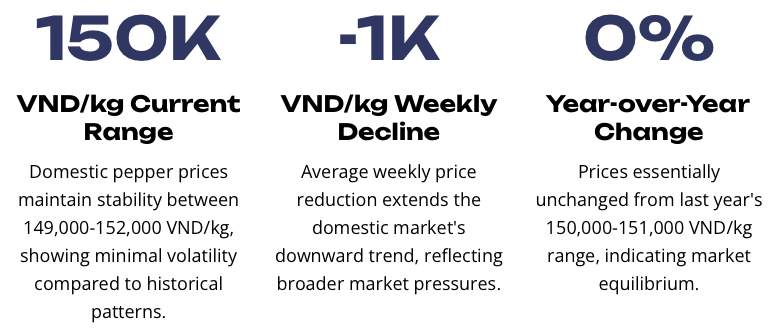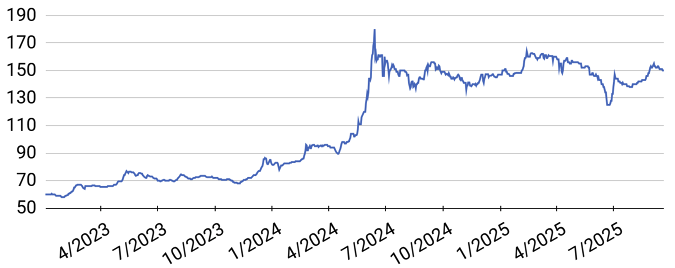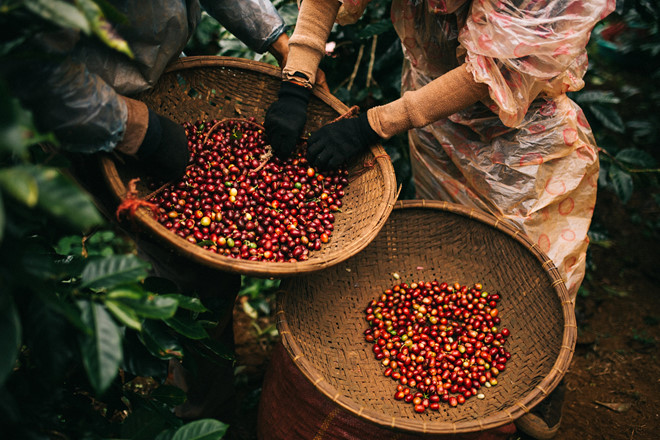2025 // Week 39 – Vietnam’s Pepper Market: Navigating Global Markets with Strategic Insight
Current Market Stability and Global Price Dynamics

Vietnamese pepper prices have demonstrated remarkable resilience, maintaining stability in a volatile global environment. The current trading range of 149,000-152,000 VND/kg reflects a mature market finding its equilibrium point. Despite last week’s average decline of 1,000 VND/kg, the broader trend shows prices have moved sideways over the past year, suggesting fundamental supply-demand balance.

Pepper price developments in the Central Highlands and Southeast from First 2023 to Sept 22, 2025 (Unit: VND/kg)
Global pepper markets present a mixed picture, with Brazil recording price increases while Southeast Asian and Indian markets face downward pressure from USD strength. This divergence highlights the complex interplay between currency fluctuations, regional supply conditions, and local demand dynamics affecting pepper pricing across major producing regions.
The Import-Export Department’s forecast emphasizes continued price fluctuations driven by weather conditions in growing regions and demand patterns from major import markets. This volatility creates both challenges and opportunities for Vietnamese exporters who must navigate uncertain pricing while maintaining competitive positioning in key export markets.
Coffee Market Impact on Pepper Trading
Market Dynamics Shift
The upcoming coffee harvest season presents both opportunities and challenges for pepper markets. High-yield, high-priced coffee expectations are generating significant market optimism, with favorable price levels attracting substantial capital investment.
However, this coffee market strength creates competitive pressure on pepper trading. Capital flows traditionally move between agricultural commodities based on relative profit opportunities, and coffee’s current attractiveness is drawing investment away from other crops, including pepper.
Some dealers are already positioning for this shift, liquidating pepper holdings to capitalize on coffee opportunities. This strategic reallocation contributes to downward pressure on pepper prices as supply increases from traders exiting positions.


